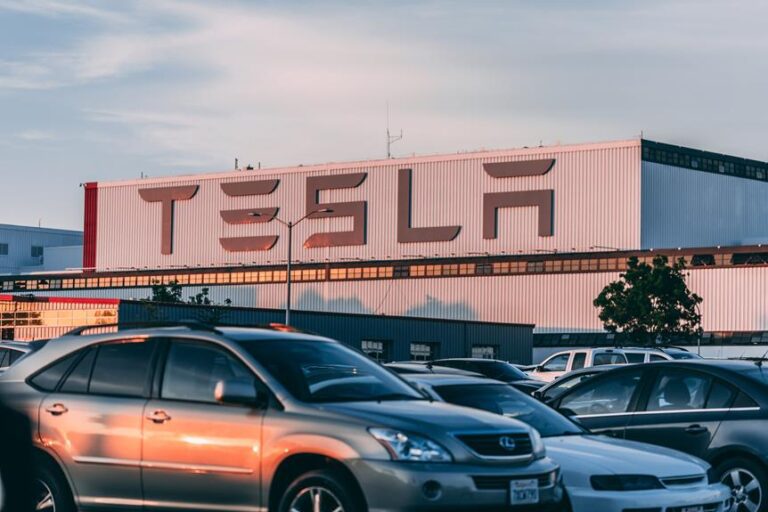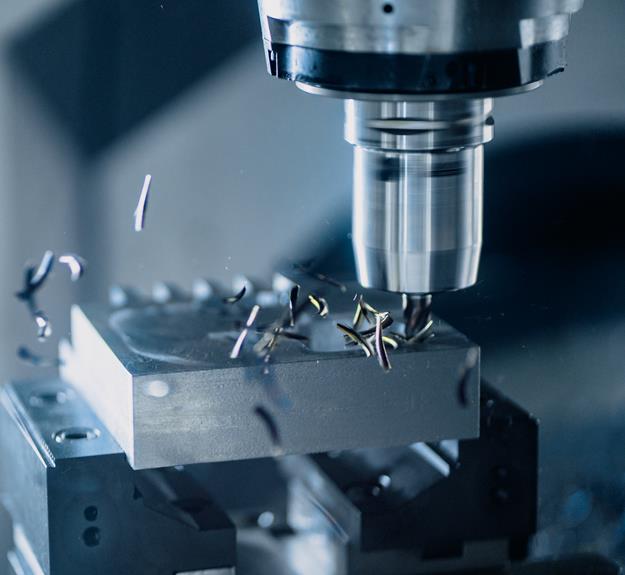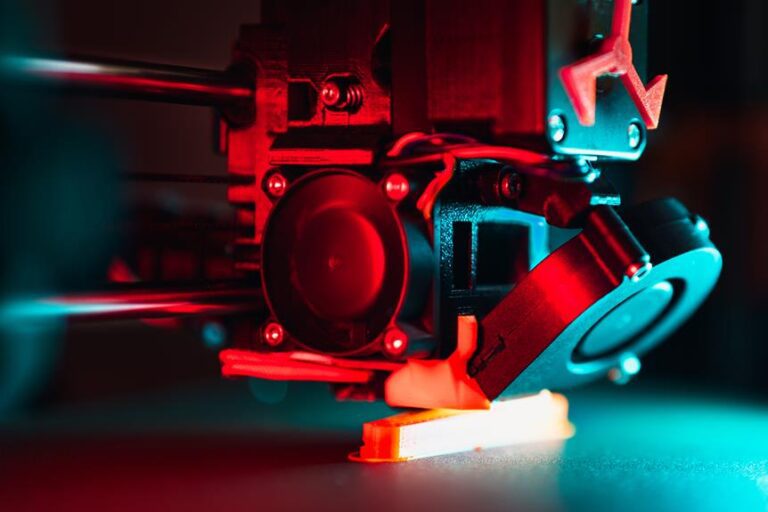Binder Jetting 3D Printers: Revolutionizing Metal and Sand Printing
In the realm of additive manufacturing, binder jetting 3D printers have emerged as a cutting-edge technology, revolutionizing metal and sand printing. These printers offer numerous advantages over traditional manufacturing methods, with their ability to create complex structures and intricate designs.
However, challenges still remain in achieving optimum results in metal and sand printing with binder jetting.
This article explores the technical workings, applications, innovations, materials, post-processing techniques, and future potential of binder jetting in metal and sand printing, providing insights into the realm of this transformative technology.
Key Takeaways
- Binder jetting 3D printing offers rapid production of complex geometries with high precision.
- It enables the production of lightweight components without compromising strength or durability.
- Binder jetting technology is cost-effective, eliminating the need for expensive tooling and reducing material waste.
- The future of binder jetting holds the promise of improved resolution, increased build size, enhanced material capabilities, and integration of multi-material printing.
Advantages of Binder Jetting 3D Printers
One of the key advantages of binder jetting 3D printers is their ability to rapidly produce complex geometries with high precision. Binder jetting is a revolutionary technique that has transformed the field of metal printing, providing numerous benefits over traditional manufacturing methods.
Firstly, binder jetting 3D printers offer significant time savings compared to conventional manufacturing processes. The ability to quickly produce intricate designs eliminates the need for complex and time-consuming machining operations. This allows for faster production cycles and reduced lead times, providing manufacturers with the freedom to bring their products to market more efficiently.
Additionally, binder jetting 3D printers excel in producing complex geometries that would be challenging or impossible to manufacture using traditional methods. The layer-by-layer approach of binder jetting allows for the creation of intricate internal structures and intricate details with high precision. This opens up new design possibilities, enabling the production of lightweight components without compromising strength or durability.
Furthermore, binder jetting offers the advantage of material versatility. These printers are capable of working with a wide range of materials, including metals, ceramics, and even sand. This flexibility allows for the creation of diverse and customized products to meet specific requirements.
Challenges in Metal and Sand Printing With Binder Jetting
While binder jetting 3D printers offer numerous advantages in metal and sand printing, there are also several challenges that need to be addressed in order to fully capitalize on this technology. These challenges primarily arise from the unique characteristics of metal and sand materials, as well as the complexities of the binder jetting process itself.
One major challenge in metal printing with binder jetting is achieving high density and strength in the printed parts. Metal powders have a tendency to agglomerate, resulting in weak and porous structures. To overcome this challenge, optimization of the printing parameters and post-processing techniques such as sintering are necessary to enhance the density and mechanical properties of the printed metal parts.
In sand printing, the challenge lies in achieving good dimensional accuracy and surface finish. The nature of sand particles makes it difficult to achieve precise and detailed prints. Additionally, the binder used in the printing process can cause shrinkage and warping, further impacting the accuracy of the printed sand parts. Advanced binder formulations and process optimization are needed to address these challenges and improve the quality of the final printed sand products.
Table:
| Challenges in Metal Printing with Binder Jetting | Challenges in Sand Printing with Binder Jetting |
|---|---|
| Achieving high density and strength | Achieving good dimensional accuracy and surface finish |
| Optimization of printing parameters | Advanced binder formulations |
| Post-processing techniques such as sintering | Process optimization |
| Minimizing shrinkage and warping |
How Binder Jetting Technology Works for Metal Printing
The binder jetting technology offers a unique and efficient approach to metal printing by selectively depositing a binder onto layers of metal powder, which is then solidified to create complex and intricate metal parts. This process begins with a thin layer of metal powder spread across a build platform. A print head then moves across the powder, precisely depositing a liquid binder onto the areas that will form the desired shape. The binder acts as a bonding agent, holding the metal particles together. Once the binder is applied, another layer of metal powder is spread on top, and the process is repeated. Layer by layer, the object is built up until the final shape is achieved.
One advantage of binder jetting technology for metal printing is its ability to create parts with complex geometries that would be difficult or impossible to achieve with traditional manufacturing methods. The freedom in design that binder jetting offers allows for the production of lightweight structures, intricate internal features, and customized parts. Additionally, the binder jetting process is faster and more cost-effective than traditional methods, as it eliminates the need for tooling and reduces material waste.
Furthermore, binder jetting technology can accommodate a wide range of metal powders, including stainless steel, titanium, and aluminum. This versatility makes it suitable for various applications across industries, such as aerospace, automotive, and medical. As the demand for innovative and high-performance metal parts continues to grow, binder jetting 3D printers are poised to play a crucial role in revolutionizing metal printing.
Applications of Binder Jetting in Metal and Sand Printing
Binder jetting technology has revolutionized metal and sand printing with its wide range of applications.
One of its key advantages is the ability to produce parts with exceptional strength and durability, making it ideal for demanding industries such as aerospace and automotive.
Additionally, binder jetting enables the creation of complex geometries that would be challenging or impossible to achieve using traditional manufacturing methods.
This technology also offers cost-effective production, as it eliminates the need for expensive tooling and reduces material waste.
Strength and Durability
Utilizing advanced technology, binder jetting 3D printers have significantly enhanced the strength and durability of metal and sand printed objects. The process involves depositing layers of a powdered material, such as metal or sand, and selectively binding them together using a liquid binder. This binding process creates a strong and cohesive structure, resulting in objects with improved mechanical properties.
In metal printing, binder jetting offers several advantages over traditional manufacturing methods. The ability to create complex geometries and internal features without the need for machining or assembly reduces material waste and production time. Additionally, the use of metal powders allows for the creation of lightweight components with high strength-to-weight ratios.
In sand printing, binder jetting allows for the production of intricate sand molds and cores used in casting processes. The high accuracy and resolution of binder jetting 3D printers ensure precise replication of intricate details, resulting in high-quality castings. This technology also enables the production of customized molds and cores, reducing the need for expensive tooling and improving design flexibility.
Complex Geometries
With its ability to produce intricate shapes and intricate internal features, binder jetting technology revolutionizes the fabrication of complex geometries in both metal and sand printing. This innovative 3D printing method allows for the creation of geometries that were previously unattainable with traditional manufacturing techniques.
The process begins by depositing thin layers of metal or sand particles, which are then selectively bound together using a liquid binder. This layer-by-layer approach enables the production of highly complex and intricate designs, including overhangs, undercuts, and internal channels.
The binder jetting technology offers designers and engineers the freedom to explore new possibilities in product design, as it eliminates many of the limitations imposed by traditional manufacturing methods. Moreover, the ability to produce complex geometries with binder jetting opens up opportunities in industries such as aerospace, automotive, and architecture, where lightweight structures and customized designs are highly sought after.
Cost-Effective Production
Incorporating binder jetting technology into metal and sand printing processes offers several advantages. Firstly, it streamlines production and reduces costs significantly, making it a cost-effective solution for industries seeking efficient and economical manufacturing methods. By utilizing binder jetting, manufacturers can eliminate the need for expensive tooling and molds, resulting in substantial cost savings.
Moreover, binder jetting enables the production of complex geometries that would otherwise be difficult or expensive to achieve using traditional manufacturing methods. The ability to print intricate designs without the constraints of traditional techniques leads to reduced material waste and increased production efficiency.
Additionally, the use of binder jetting technology allows for the production of customized parts on-demand, eliminating the need for large inventories and reducing the associated costs. This flexibility in manufacturing helps industries meet specific customer requirements without incurring additional expenses.
Innovations in Binder Jetting for Metal and Sand Printing
The continuous innovations in binder jetting technology have opened up new possibilities for design in metal and sand printing. By enabling intricate geometries and complex internal structures, binder jetting allows for the production of parts that were previously difficult or impossible to manufacture using traditional methods.
In addition, the cost-effective production methods of binder jetting make it an attractive option for various industries, leading to increased adoption and exploration of its capabilities.
Furthermore, advancements in material compatibility have expanded the range of materials that can be used in binder jetting, further enhancing its versatility and applicability in different applications.
Increased Design Possibilities
As technology continues to advance, the innovations in binder jetting for metal and sand printing have led to increased design possibilities. Binder jetting, a 3D printing technique, offers numerous benefits in terms of design freedom and complexity. By selectively depositing a binding agent onto thin layers of metal or sand powder, intricate shapes and geometries can be achieved with ease.
One of the key advantages of binder jetting is its ability to produce complex internal structures and hollow parts. This opens up new possibilities for lightweight designs and optimized internal features, such as lattice structures, that were previously difficult to manufacture using traditional methods. Additionally, binder jetting enables the production of highly detailed and intricate designs with fine features and intricate patterns.
To illustrate the design possibilities offered by binder jetting, the following table showcases some key features and advantages of the technology:
| Design Possibilities | Advantages | Examples |
|---|---|---|
| Complex geometries | Enables intricate shapes | Lightweight aerospace parts |
| Internal structures | Optimized weight | Lattice structures |
| Fine details and patterns | High level of detail | Jewelry and artistic pieces |
With these advancements in binder jetting technology, designers and engineers have the freedom to explore new horizons in product design, pushing the boundaries of what is possible and creating innovative solutions in various industries.
Cost-Effective Production Methods
Binder jetting 3D printers offer a cost-effective solution for metal and sand printing, making it an attractive option for industries seeking efficient production methods. Here are four reasons why binder jetting is a cost-effective production method:
- Reduced material waste: Binder jetting technology allows for precise and controlled deposition of materials, minimizing material waste compared to traditional manufacturing processes.
- Faster production times: Binder jetting enables high-speed printing, reducing the time required for production. This results in quicker turnaround times and increased productivity.
- Lower labor costs: Binder jetting requires minimal manual labor, as the printing process is automated. This reduces labor costs and increases overall efficiency.
- Economical scalability: Binder jetting allows for the production of large quantities of parts in a single build, making it a cost-effective option for mass production.
With these cost-saving advantages, binder jetting is revolutionizing the manufacturing industry.
In the next section, we will explore the advancements in material compatibility that further enhance the capabilities of binder jetting 3D printers.
Advancements in Material Compatibility
Advancements in material compatibility have expanded the possibilities of binder jetting for metal and sand printing, revolutionizing the capabilities of this technology.
In recent years, significant progress has been made in developing binder jetting systems that can work with a wider range of materials, allowing for greater flexibility and versatility in the 3D printing process. Innovations in binder formulation and binder delivery systems have played a key role in improving material compatibility.
Manufacturers have been able to develop binders that are specifically designed to work with different types of metals and sands, ensuring optimal adhesion and stability during the printing process. This has opened up new opportunities for creating complex metal parts and intricate sand molds with high precision and accuracy.
The advancements in material compatibility are paving the way for more efficient and cost-effective production methods in various industries, from aerospace to automotive, and from construction to healthcare.
Materials Used in Binder Jetting 3D Printing
Featuring a wide range of materials, binder jetting 3D printing offers a versatile solution for manufacturing various components and structures. This additive manufacturing technique utilizes a binder to selectively bond powdered materials together, layer by layer, to create complex objects.
The materials used in binder jetting can be classified into four main categories:
- Metals: Binder jetting is capable of producing high-quality metal parts using a variety of metal powders, including stainless steel, titanium, and aluminum. These materials offer excellent strength, durability, and corrosion resistance, making them suitable for applications in aerospace, automotive, and medical industries.
- Ceramics: Binder jetting also enables the production of ceramic parts with intricate geometries. Materials such as alumina, zirconia, and silicon carbide can be used to create components with high heat resistance, electrical insulation, and mechanical strength. Ceramic parts produced through binder jetting find applications in electronics, aerospace, and biomedical fields.
- Composites: By combining different materials, binder jetting can produce composite parts with enhanced properties. For example, adding carbon fibers to a polymer powder can result in lightweight yet strong parts suitable for applications in sports equipment, automotive, and aerospace industries.
- Sands: Binder jetting is particularly advantageous for sand casting applications. It allows for the rapid and cost-effective production of sand molds and cores, which are used in metal casting processes. The ability to quickly iterate on designs and produce complex geometries makes binder jetting an ideal solution for sand casting foundries.
Post-Processing Techniques for Binder Jetted Metal and Sand Prints
With the completion of the binder jetting process, various post-processing techniques can be applied to enhance the quality and performance of metal and sand prints. These techniques aim to remove excess binder, improve surface finish, and enhance mechanical properties. Here are some commonly used post-processing techniques for binder jetted metal and sand prints:
| Technique | Description | Benefits |
|---|---|---|
| Debinding | The removal of excess binder from the printed part. | Improves the strength and density of the final part. |
| Sintering | Heating the part to a high temperature to fuse the metal particles. | Enhances the mechanical properties of the printed part. |
| Infiltration | Impregnating the part with a secondary material for added strength. | Increases the durability and stability of the part. |
| Machining | Removing excess material and refining the part to meet specifications. | Achieves tight tolerances and desired surface finish. |
| Surface Treatment | Applying coatings or finishes to improve aesthetics and corrosion resistance. | Enhances the appearance and durability of the part. |
These post-processing techniques are essential for achieving the desired properties and aesthetics in binder jetted metal and sand prints. They provide the necessary finishing touches to ensure the final product meets the requirements of the intended application. By utilizing these techniques, manufacturers can maximize the potential of binder jetting technology and unlock new possibilities in the realm of 3D printing.
Comparing Binder Jetting With Other 3D Printing Technologies
Several 3D printing technologies exist, but when comparing them, binder jetting stands out for its unique advantages and capabilities. Here are four key areas where binder jetting excels:
- Materials versatility: Binder jetting offers a wide range of compatible materials, including metals, ceramics, and sand. This versatility allows for the production of complex and customized parts with different properties and functionalities.
- Speed and scalability: Binder jetting is known for its high printing speed, making it ideal for large-scale production. It can create multiple parts simultaneously, reducing production time and costs significantly.
- Cost-effectiveness: Binder jetting is a cost-effective 3D printing technology due to its lower material costs and minimal waste. The ability to reuse excess powder makes it an economical choice for both prototyping and production.
- Design freedom: Binder jetting enables the creation of intricate and complex geometries that are difficult or impossible to achieve with traditional manufacturing methods. This design freedom allows for lightweight structures, improved functionality, and increased innovation.
While other 3D printing technologies have their own advantages, binder jetting stands out for its versatility, speed, cost-effectiveness, and design freedom. These unique capabilities make it a preferred choice for various industries, including automotive, aerospace, and healthcare, where complex and customized parts are in high demand.
Future Trends and Potential of Binder Jetting in Metal and Sand Printing
The future of binder jetting in metal and sand printing holds immense potential for revolutionizing manufacturing processes and unlocking new possibilities for complex and customizable parts. As the technology continues to advance, several future trends can be anticipated, including improved resolution, increased build size, and enhanced material capabilities.
| Future Trends | Potential Impacts |
|---|---|
| Improved resolution | Enables the production of finer details and intricate geometries, resulting in higher quality prints. |
| Increased build size | Allows for the production of larger parts, reducing the need for assembly and improving overall efficiency. |
| Enhanced material capabilities | Expands the range of materials that can be used, including high-performance alloys and composite materials, opening up new applications and industries. |
| Integration of multi-material printing | Enables the creation of complex, multi-functional parts with different materials, combining their unique properties to optimize performance. |
These future trends will drive the adoption of binder jetting in various industries, such as aerospace, automotive, and healthcare. The ability to produce customized and lightweight parts with reduced waste and lead times will significantly impact the manufacturing landscape. Furthermore, binder jetting has the potential to democratize manufacturing by enabling small and medium-sized enterprises to leverage the benefits of 3D printing, leading to increased innovation and competitiveness. As the technology continues to evolve, it is expected that binder jetting will play a crucial role in shaping the future of metal and sand printing, transforming the way we design, produce, and consume products.
Frequently Asked Questions
How Long Does It Take to Print an Object Using Binder Jetting Technology?
The duration required for printing an object using binder jetting technology depends on several factors such as the size and complexity of the object, the type of material being printed, and the specific settings used.
What Are the Limitations in Terms of Size and Complexity of Objects That Can Be Printed With Binder Jetting?
The limitations in terms of size and complexity of objects that can be printed with binder jetting are influenced by factors such as printer capabilities, material properties, and post-processing requirements. These factors determine the maximum build volume and resolution achievable.
Are Binder Jetted Metal and Sand Prints as Strong and Durable as Traditionally Manufactured Objects?
Binder jetted metal and sand prints can possess comparable strength and durability to traditionally manufactured objects. However, variations in material properties, layer adhesion, and post-processing techniques may influence the final mechanical properties of binder jetted prints.
Can Binder Jetting Be Used to Print Objects With Multiple Materials or Colors?
Yes, binder jetting can be used to print objects with multiple materials or colors. This technique allows for the deposition of different materials or colors layer by layer, resulting in complex and visually appealing 3D printed objects.
Are There Any Safety Concerns or Precautions to Consider When Using Binder Jetting 3D Printers?
When using binder jetting 3D printers, it is important to consider safety concerns and take necessary precautions. Potential hazards include exposure to harmful chemicals, fire hazards, and the need for proper ventilation. Adhering to safety guidelines is crucial to ensure a safe working environment.
Conclusion
In conclusion, binder jetting 3D printers are revolutionizing the fields of metal and sand printing. This innovative technology offers numerous advantages, such as faster production times, reduced costs, and increased design flexibility.
Despite facing challenges in achieving high levels of precision and strength, ongoing innovations in binder jetting are pushing the boundaries of what is possible in metal and sand printing.
With a wide range of materials available and various post-processing techniques, binder jetting has the potential to transform manufacturing processes in the future.









